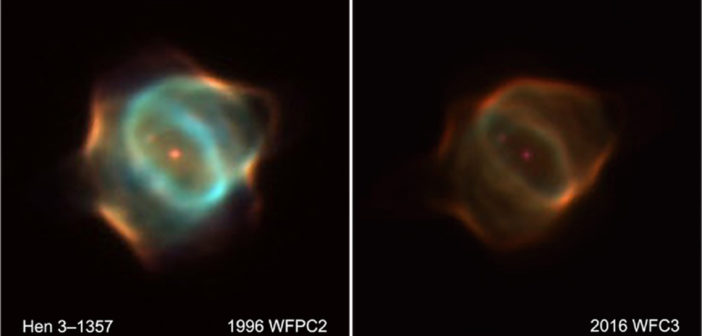These two Hubble Space Telescope images of the Stingray Nebula (click to enlarge), spaced 20 years apart, show the remarkably rapid evolution of this unique planetary nebula. Planetary nebulae are formed when the outer layers of a dying intermediate-mass star are expelled and subsequently ionized by radiation from the star’s hot core. This ionized gas then glows until it eventually recombines and fades. While typical planetary nebulae arise and decline on timescales of thousands of years, observations of the Stingray Nebula show this same evolution occurring over about 40 years — it first became visibly ionized in the 1980s, and it has already dramatically faded and changed shape, structure, and size. It will likely be barely detectable within a couple decades. The Hubble observations showing the rapid changes in this youngest known planetary nebula are reported on in a new publication led by Bruce Balick (University of Washington).
Citation
“The Decline and Fall of the Youngest Planetary Nebula,” Bruce Balick et al 2021 ApJ 907 104. doi:10.3847/1538-4357/abcc61
